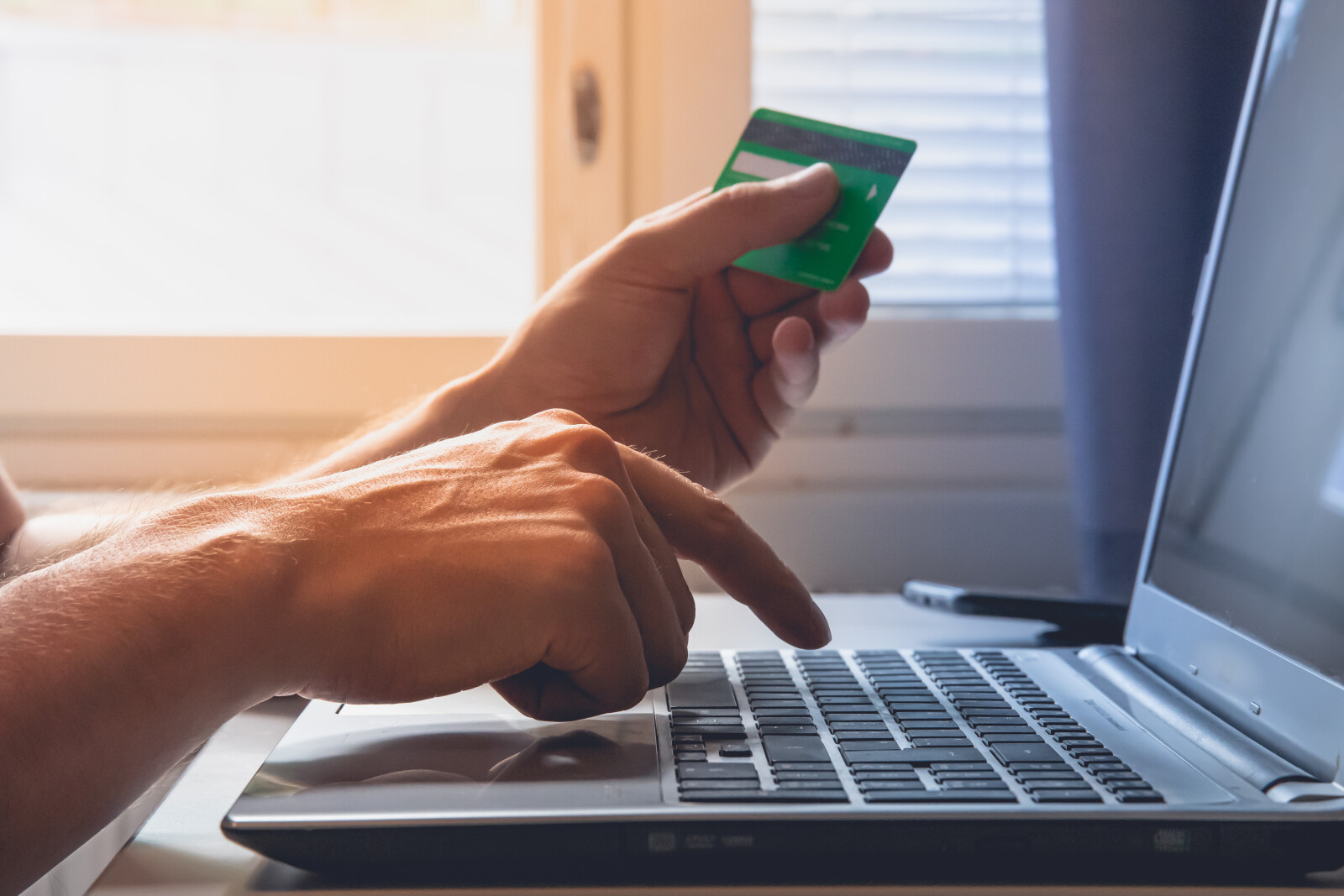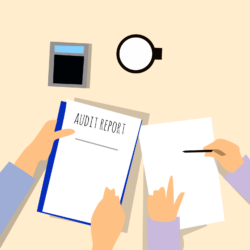Preventing Credit Card Skimming: A Comprehensive Guide for Consumers and Businesses
In the current era of digital transactions, credit card skimming has emerged as a significant concern for consumers and financial institutions alike. This illicit activity, which involves the unauthorized capture of credit card information, is the subject of increasing scrutiny. Understanding the anatomy of a skimming device, its mode of operation, and the common signs of its presence is instrumental in combating this form of electronic fraud.

This article delves into the intricate details of how these devices work, their typical components, and their most likely locations. It further explores the strategies to identify potential fraud, the role of banks in prevention, and the importance of staying informed to safeguard personal finances.
As online commerce becomes increasingly prevalent, the article also addresses the threat of virtual skimmers. The objective is to equip readers with comprehensive knowledge to spot and report skimming activities, thereby reducing the risks associated with electronic financial transactions.
Key Takeaways
- Skimming devices are difficult to detect and are discreetly installed on ATMs or point-of-sale terminals.
- Regular inspections, user vigilance, and technological countermeasures are necessary to prevent skimming at various locations such as gas stations and retail stores.
- Awareness, education, and proactive measures are crucial in protecting personal financial information and preventing unauthorized transactions.
- Implementing a multi-layered approach to security, leveraging advanced security features, and practicing safe financial behavior can help fortify card security and prevent credit card skimming.
The Rise of Electronic Fraud
Undeniably, the digital era has witnessed an alarming surge in electronic fraud, particularly credit card skimming, necessitating vigilance in understanding its intricacies and developing effective countermeasures. The growing sophistication of these skimming devices, which can be as small as a matchbox and yet capable of wreaking havoc on an individual's financial stability, is a testament to the ingenuity of cyber criminals. This escalating threat has compelled significant cybersecurity advancements, aimed at creating robust defence mechanisms against such fraudulent activities.
Despite these advancements, the covert nature of skimming devices makes them exceedingly difficult to detect, thereby increasing their potential for damage. They are often discreetly installed on ATMs or point-of-sale terminals, stealing credit card information during transactions. This stolen data is subsequently used for unauthorized transactions, leading to substantial financial losses for victims.
The repercussions of identity theft, a common consequence of credit card skimming, extend beyond mere monetary loss. It can tarnish an individual's credit history and reputation, causing significant distress and inconvenience. The recovery process is often arduous and time-consuming, further exacerbating the victim's plight.
The rise of electronic fraud underscores the pressing need for heightened awareness and vigilance in a society heavily reliant on digital transactions. Preventive measures such as regular examination of bank statements, vigilant use of credit cards at unfamiliar terminals, and frequent updating of cybersecurity software must be exercised. While the battle against electronic fraud is far from over, strategic countermeasures, coupled with an educated public, are vital to curbing this menace.
Understanding How Skimming Works
In order to effectively counteract illicit activities, it is crucial to gain a comprehensive understanding of how skimming operates, from the initial data theft to the fraudulent use of stolen information.
The history of skimming dates back to the early 2000s, when electronic transactions began to rise in popularity. Technologically-savvy criminals saw this as an opportunity to exploit weaknesses in the security systems of electronic payment methods.
Initially, skimming devices were simplistic and easy to spot. However, over time, these devices have become increasingly sophisticated, making it difficult for users and even experts to detect their presence. Skimming devices, often attached to ATMs or point-of-sale terminals, are designed to steal credit or debit card information during a legitimate transaction. The stolen data is then stored or transmitted to the fraudsters for future illicit use.
Regarding skimming legislation, countries have implemented various laws and penalties to deter this form of electronic fraud. In the United States, for instance, credit card skimming is considered a federal crime under the Identity Theft and Assumption Deterrence Act. The act stipulates hefty fines and lengthy prison sentences for individuals caught engaging in skimming activities.
Nevertheless, despite stringent legislation and advancements in anti-skimming technology, the issue persists. It remains a major challenge for law enforcement agencies and financial institutions worldwide. Therefore, it is essential for consumers to remain vigilant and proactive in protecting their financial information.
This involves regularly updating passwords, monitoring account activities, and being cautious when using ATMs or point-of-sale terminals.
Components of a Typical Skimming Tool
Understanding the components of a typical skimming tool provides crucial insights into its operational mechanisms, thus enabling a more efficient detection and prevention of such fraudulent activities. Skimming tools, with a history dating back to the advent of magnetic strip credit cards, have continually evolved in sophistication with advancements in technology.
The first component of a common skimming tool is the card reader. This component has a magnetic strip reader that captures the card's information when swiped or inserted. The reader, often small and inconspicuous, can be installed over actual card slots in ATMs and point-of-sale terminals. Considering the skimming tool history, the card reader component has been the most consistent feature, only evolving in size and concealment techniques.
The second component is the storage unit. This part of the skimming tool stores the information gathered from the cards. In earlier versions of skimming devices, the data had to be manually retrieved from the device. However, advanced skimming techniques now include wireless data transmission capabilities, making data retrieval more efficient for the fraudsters.
The final component is the camera or keypad overlay. Used to capture the PIN associated with the card, this is a critical part of the tool's functionality. A small camera is often hidden to record the card user's keypad entries. Alternatively, a keypad overlay captures the pin directly when the user inputs it.
These components combined form a powerful tool capable of stealing personal financial data, which underscores the need for vigilance and knowledge about such tools. By understanding these components and their evolution, one can better identify and avoid potential skimming devices, thereby safeguarding personal financial information.
Common Locations for Skimming Devices
Predominantly, skimming devices are covertly installed in places where transactions involving card payments are frequent, such as ATMs, gas stations, and point-of-sale terminals in retail stores. These locations are strategically chosen for their high volume of card transactions and the relative ease with which skimming devices can be installed and retrieved. The skimming devices are often designed to blend into the card reader slot, making them difficult to spot with an untrained eye. Thus, skimming device detection can be challenging and requires a keen understanding of what to look for.
ATMs are a common target for skimming devices due to the continuous flow of users. These devices are often installed directly over the card slot and are designed to capture card information as the card is inserted. Preventing ATM skimmers requires a combination of user vigilance, technological countermeasures such as anti-skimming technology, and regular inspections by ATM owners.
Gas stations are another popular location for skimming devices. These devices are typically installed inside the pump's card reader, making them invisible to customers. Regular inspections by station owners and the use of tamper-evident security labels can aid in skimming device detection.
Standalone point-of-sale terminals in retail stores are also susceptible to skimming. Here, skimming devices are often disguised as legitimate parts of the terminal, making them hard to spot. Regular inspection of these terminals by store owners, staff training in skimming device detection, and the use of encrypted card readers can help prevent skimming.
To mitigate the risk of falling victim to skimming, it is crucial to maintain a culture of vigilance, especially in high-risk locations. Awareness and education about skimming devices, coupled with technological countermeasures, can significantly reduce the prevalence and impact of card skimming.
Recognizing Signs of Potential Fraud
Recognizing signs of potential fraud is an essential skill to acquire in today's digital age, particularly when it comes to protecting oneself from skimming devices and other forms of financial exploitation. It is pertinent to educate oneself on the various fraud indicators, as well as to remain vigilant for scam alerts that could potentially signal the presence of a skimming device.
One prevalent fraud indicator is the physical alteration of the credit card reader. Skimming devices often present as an additional piece attached to the card reader. This attachment is designed to capture the credit card information as it is swiped through the machine. Therefore, if a card reader appears to be modified or has an unusual protrusion, it could potentially be a skimming device.
Additionally, the presence of a hidden camera is another typical fraud indicator. These cameras are usually strategically placed to record the PIN as it is entered on the keypad. Unusual objects positioned at a vantage point near the keypad may be cause for concern.
Moreover, scam alerts often come in the form of unauthorized transactions on an individual's bank statement. Regularly monitoring bank accounts for any unfamiliar charges is a proactive approach to identifying potential fraud.
In an era where technology is rapidly advancing, the sophistication of skimming devices and other fraudulent activities also increases. Thus, it is of utmost importance to remain vigilant, educate oneself on the indicators of potential fraud, and take necessary measures to protect personal financial information. Awareness and prompt action can considerably reduce the risk of becoming a victim to such financial scams.
Implementing Protective Measures
In the quest to safeguard personal finances, implementing protective measures against potential fraud is a crucial step that demands utmost attention and diligence. Given the sophisticated nature of fraudulent schemes, particularly those related to credit card skimming, a multi-layered approach to security is necessary. This includes, but is not limited to, regular fraudulent transactions analysis, the use of advanced security features, and the practice of safe financial behavior.
Fraudulent Transactions Analysis serves as a vital tool in detecting and preventing fraudulent activity. This process entails monitoring transactions to identify unusual or suspicious patterns, potentially indicative of fraud. A sudden increase in transaction volume, transactions occurring in quick succession, or transactions originating from unfamiliar locations may all be red flags. These anomalies, once detected, can trigger immediate action to protect the cardholder's assets.
Furthermore, leveraging Advanced Security Features offered by financial institutions can significantly help in fortifying card security. Chip technology, for instance, offers a higher level of security than traditional magnetic stripe cards. The encrypted data on the chip is difficult to duplicate, making it a powerful deterrent against skimming. Biometric features, such as fingerprint recognition, enhance security further by adding an extra layer of verification.
Lastly, the adoption of safe financial behavior can complement technological measures. This may include shielding the keypad when entering the PIN, regularly updating online banking passwords, and avoiding the use of public Wi-Fi when accessing financial accounts.
Therefore, the combination of vigilant fraudulent transactions analysis, the utilization of advanced security features, and the practice of secure financial behavior constitutes a holistic approach to protecting oneself from credit card skimming and other forms of card fraud.
Online Shopping: Avoiding Virtual Skimmers
Upon establishing an understanding of protective measures against physical credit card skimming devices, it is crucial to extend this awareness into the realm of online transactions. This is where the peril of virtual skimming techniques arises, calling for insightful consumer awareness strategies.
Virtual skimming, also known as e-skimming, operates in the digital world, often undetected. Cybercriminals inject malicious code into the payment processing sections of websites, typically e-commerce platforms. Once a customer enters their credit card information, the skimming code captures it, and the data is then transmitted to the perpetrator. This illicit activity is generally invisible to the consumer, making it a particularly insidious form of fraud.
To counteract these risks, consumer awareness strategies should be implemented. Firstly, consumers should be cautious when providing card information online. It is important to verify the legitimacy of a website before making a purchase. Websites with 'https' in the URL and a padlock icon are generally secure, as they use encryption to protect data. However, even secure websites can be compromised, so consumers should remain vigilant.
Furthermore, keeping software and devices updated can help protect against the latest virtual skimming techniques. Regularly updating antivirus software can also aid in detecting and blocking skimming code. Additionally, using credit cards instead of debit cards for online purchases can provide an extra layer of protection, as credit card companies often offer fraud protection services.
In the fight against virtual skimming, consumer awareness, and proactive measures play a vital role. The knowledge of potential threats and the ways to mitigate them can significantly reduce the risk of falling victim to such cybercrimes.
Reporting Suspected Skimming Activity
Should signs of suspicious activity emerge, such as unexpected charges or unfamiliar transactions, it becomes imperative to promptly report the potential skimming incident to the relevant financial institution and law enforcement agencies. Notifying these entities not only initiates an investigation into the matter, but it also helps to mitigate potential financial losses and aids in the prevention of further fraudulent activity.
Law enforcement involvement is crucial when a skimming incident is suspected. Agencies such as the local police, Federal Trade Commission (FTC), and the Internet Crime Complaint Center (IC3) are equipped to handle reports of credit card skimming. These entities have the resources necessary to conduct thorough investigations, trace the origins of the skimming device, and potentially apprehend those responsible. Besides, they can provide essential information to the public about the latest skimming techniques and protective measures.
Simultaneously, financial institutions also play a pivotal role in skimming victim support. They provide immediate assistance by blocking the compromised card, issuing a new one, and initiating a fraud investigation. In many cases, the financial institution may also offer provisional credit while the investigation is underway.
Moreover, reporting suspected skimming incidents contributes to a broader understanding of these fraudulent practices. Each report provides valuable data that can enhance the development of more secure payment technologies and strengthen anti-skimming strategies.
Thus, it is evident that prompt reporting of suspected skimming activity serves dual purposes: it protects the individual's financial interests and contributes to the collective effort of combating such fraudulent practices in society. It underscores the importance of individual vigilance in safeguarding personal financial information.
The Role of Banks and Financial Institutions in Prevention
Banks and financial institutions hold a key position in the prevention of skimming activities, empowered by their access to advanced technology and robust security protocols. Their role is pivotal in maintaining the integrity of the financial system, protecting consumers, and preventing potential losses due to fraudulent activities. It is through their effective use of banking regulations and fraud detection techniques that they can minimize the risk and impact of credit card skimming.
Banking regulations provide the legal framework for banks and other financial institutions to operate within. These regulations mandate the implementation of certain security measures and risk management practices, which are designed to prevent fraudulent activities such as skimming. Banks are also required to regularly monitor and report on their compliance with these regulations, ensuring that their practices are continually updated to address evolving threats.
Fraud detection techniques are another crucial tool in the arsenal of banks and financial institutions. Advanced analytics and machine learning technologies are often used to detect irregular patterns of transactions, which could indicate the presence of a skimming device. Regularly updating these systems is essential to keep pace with the sophisticated methods used by fraudsters.
Moreover, financial institutions actively collaborate with law enforcement agencies, sharing valuable information and resources to identify and apprehend those involved in skimming activities. Through these combined efforts, the banking sector plays a substantial role in preventing the spread and impact of credit card skimming.
The implementation of stringent banking regulations, alongside sophisticated fraud detection techniques, ensures that banks and financial institutions remain at the forefront of efforts to prevent credit card skimming. This proactive approach offers enhanced security for consumers and reduces financial loss, demonstrating the vital role these institutions play in safeguarding the financial system.
Staying Informed: The Key to Safeguarding Your Finances
Maintaining a vigilant and informed stance is paramount in protecting one's finances from potential threats such as credit card skimming. Knowledge is an essential tool in safeguarding one's financial resources and personal information. Through financial literacy, individuals can gain a comprehensive understanding of financial concepts and practices, enabling them to make informed decisions about their monetary resources.
Financial literacy encompasses various topics, including the understanding of credit card skimming devices. This knowledge is crucial in recognizing the signs of skimming devices, thus preventing potential losses. Skimming devices operate by capturing credit card information, often without the cardholder's awareness. By understanding how these devices work, individuals are better equipped to identify potential threats.
In addition to financial literacy, identity protection plays a significant role in safeguarding one's finances. Identity protection is a proactive approach that involves taking measures to prevent unauthorized access to personal and financial information. This includes regularly monitoring financial statements, being mindful of the physical environment when using credit cards, and utilizing protective measures offered by financial institutions.
A significant component of identity protection is awareness of the different tactics used by fraudsters, such as credit card skimming. This awareness, combined with financial literacy, serves as a robust defense against financial threats.
It is evident that the key to protecting one's finances lies in staying informed and vigilant. Through financial literacy and identity protection, individuals are better positioned to guard against potential threats, such as credit card skimming. This proactive stance can significantly reduce the risk of financial losses and identity theft.
Frequently Asked Questions
What are the legal consequences for those caught using skimming devices?
Legal repercussions for individuals implicated in Skimming Device Construction and involvement in Skimmer Distribution Networks are severe. Depending on jurisdiction, offenders may face charges including identity theft, fraud, and computer crimes, all of which carry hefty fines and lengthy imprisonment.
The prosecution of such crimes is usually thorough, given the serious financial harm they can inflict on victims. To deter potential offenders, the severity of these legal consequences is emphasized consistently in cybercrime legislation.
How does the recovery process work for victims of credit card skimming?
The recovery process for victims of credit card skimming commences with the assertion of Cardholder Rights, including the right to dispute fraudulent charges.
Concurrently, victims are advised on Preventive Measures to avoid future incidents, such as regularly monitoring accounts, using secure networks for online transactions, and shielding PINs during transactions.
Furthermore, it is incumbent upon financial institutions to rectify affected accounts promptly, reinforcing the necessity for robust cybersecurity measures.
What advancements are being made in technology to combat the use of skimming devices?
Advancements in technology have led to the development of Skimming Prevention Techniques, such as encryption and tokenization, to combat the use of skimming devices.
Innovative Anti Skimming Solutions are also being employed, including EMV chip cards and contactless payment methods, which offer enhanced security.
These advancements demonstrate the industry's commitment to maintaining the integrity of electronic transactions and safeguarding consumers' financial information from potential fraudsters.
How long does it typically take to notice fraudulent activity after being skimmed?
The period for detecting fraudulent activity post-skimming varies considerably, depending largely on the effectiveness of Skimming Detection Methods applied.
Typically, financial institutions may detect suspicious activity within a few days to a week, however, for individuals, it may take longer, often not until Fraudulent Charges Impact their account balances.
Thus, enhancing awareness of skimming devices and vigilance in scrutinizing account activities can substantially expedite the identification of such illicit activities.
Are there any mobile apps or tools that can help detect a skimming device?
Numerous mobile applications and tools have been designed to detect potential skimming devices. These applications utilise skimming prevention techniques such as real-time scanning and alert systems.
Protective app features include abnormal activity detection, secure transaction monitoring, and encryption capabilities.
These tools provide an additional layer of protection and can effectively alert users of any potential security threats, thereby assisting in the prevention of fraudulent activities linked to skimming devices.
Conclusion
In conclusion, the increasing prevalence of credit card skimming necessitates heightened vigilance. Understanding the mechanics of skimming devices and recognizing potential signs of fraud are crucial in protecting oneself from financial security breaches. It is important to stay informed about fraudulent practices and report any suspicious activities to financial institutions. By doing so, individuals can contribute significantly to the prevention of such fraudulent activities. Financial institutions also play an essential role in preventing credit card skimming and must continuously advance their security measures. By working together, individuals and financial institutions can help safeguard personal finances in this digital age.

This post has been generated by AI and was not reviewed by editors. This is Not legal advice. Please consult with an attorney.




